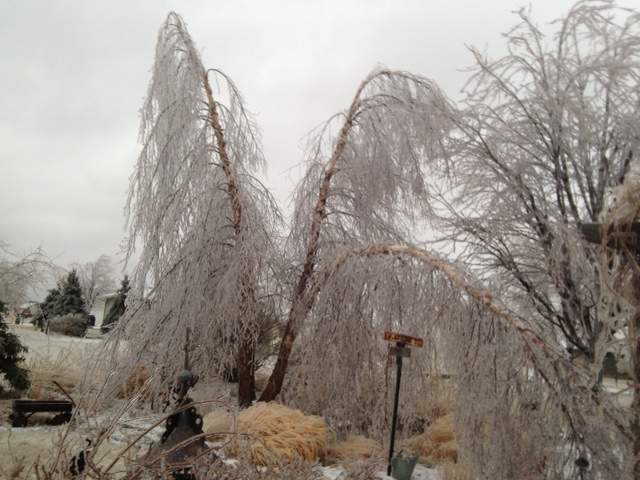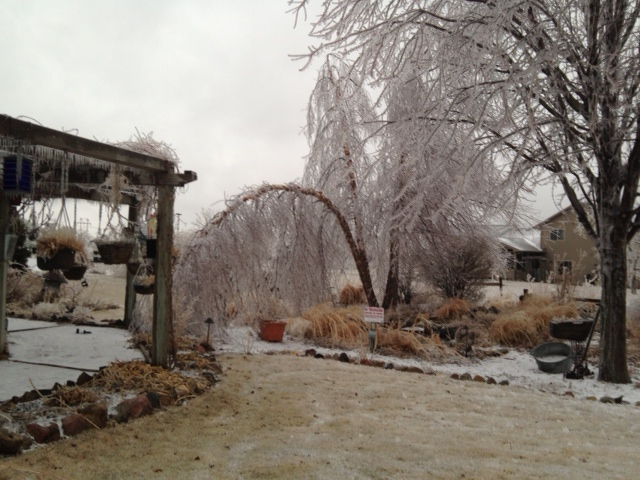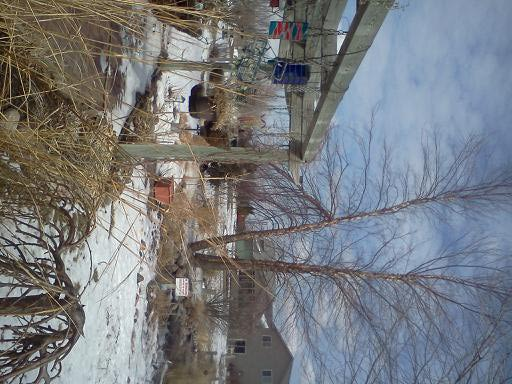Question River birch after ice
River birch after ice
 River birch second pic
River birch second pic
QUESTION: A four trunk river birch was damaged by extreme icing. Two of the four trunks were bent completely to the ground during the ice storm. One of those broke about 15-20 feet from the ground. The second trunk broke free from the ice and returned to its normal shape. My question is what to do with the broken one. Can it be saved by topping of the broken part or should the whole trunk be removed at ground level? Thanks for your help.
ANSWER: Would your please send photo of what it looks like now.
What is your best guess as to the diameter where the stem has been broken.
How much of the top foliage remains. Estimate on percentage of branches that produce the leaves that was lost.
Thanks
---------- FOLLOW-UP ----------
 Tree after ice melted
Tree after ice melted
QUESTION: The trunk at the break is an estimated 5-6 inches in diameter. I would estimate that 50% of the foliage would be below the break with these branches being larger than the ones above the break.
AnswerThere are two issues that are a factor in decision.
a) a large loss of foliage will cause epicormic shoots or water sprouts. Epicormic shoots are dormant buds along the trunk and limbs that will begin to vigorously grown with loss of foliage and exposure to light. Trees with severe die-back due to winter injury, drought and salt spray often produce many such sprouts as a means of compensating for the loss of leaf surface due to the stress or injury.
See link.
http://www.umanitoba.ca/afs/hort_inquiries/miscellaneous/epicormic_shoots_sucker
This is the reason that the ANSI A300 Best Management Practices recommends the removal of no more than 25% of foliage in a single year.
B) the break is a major size of the stem. Birch are a weaker tree in the healing process. Trees actually heal by compartmentalizing.
Compartmentalization of trees is abbreviated as CODIT (Compartmentalization of Decay in Trees).
It is a process whereby the tree will build a wall around the decay or wound area, and prevent it from spreading throughout the tree. Some trees are quite good at this, others no so great.
The birch is actually on the weak side here.
Look at Betula the scientific name of the birch in the next link.
http://hort.ifas.ufl.edu/woody/compartmentalization.shtml
Look at this presentation on slide 17. Weak trees prone to decay.
http://www.agriculture.purdue.edu/fnr/urbanforestry/pdf/TreeRiskAssessment.pdf
With a large wound, in a tree that is weak in the healing process and around 50% of the foliage lost, I would recommend taking this down.
The only other issue, how or where does it tie into any of the other trees, or does it go directly to the ground as an individual.
Thanks.








